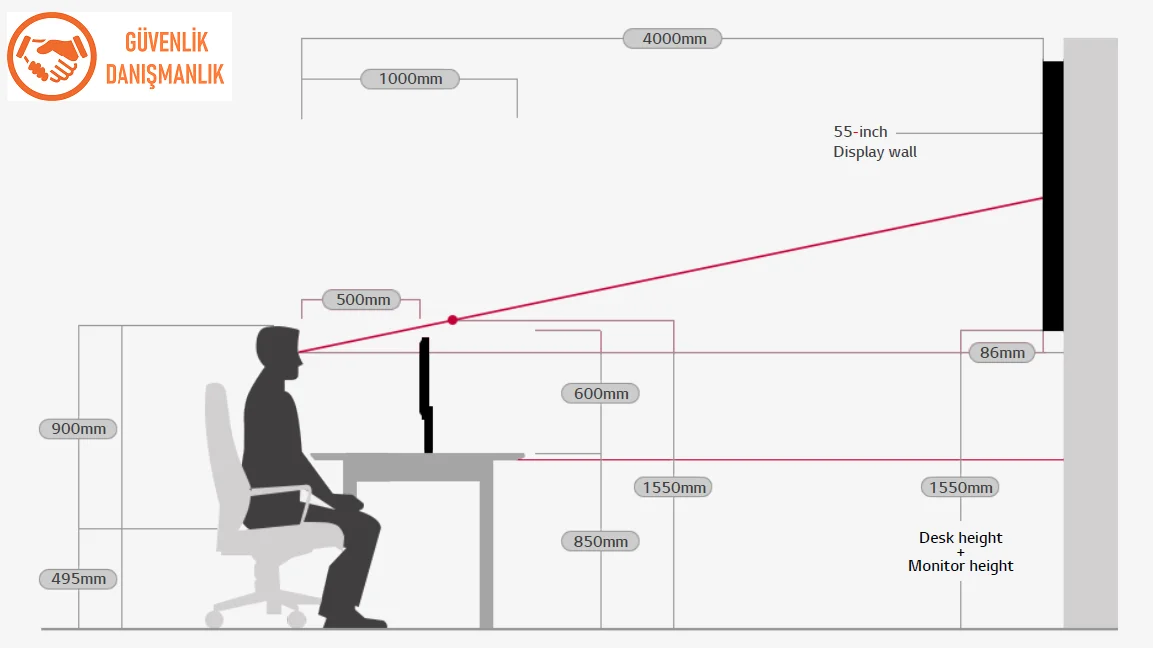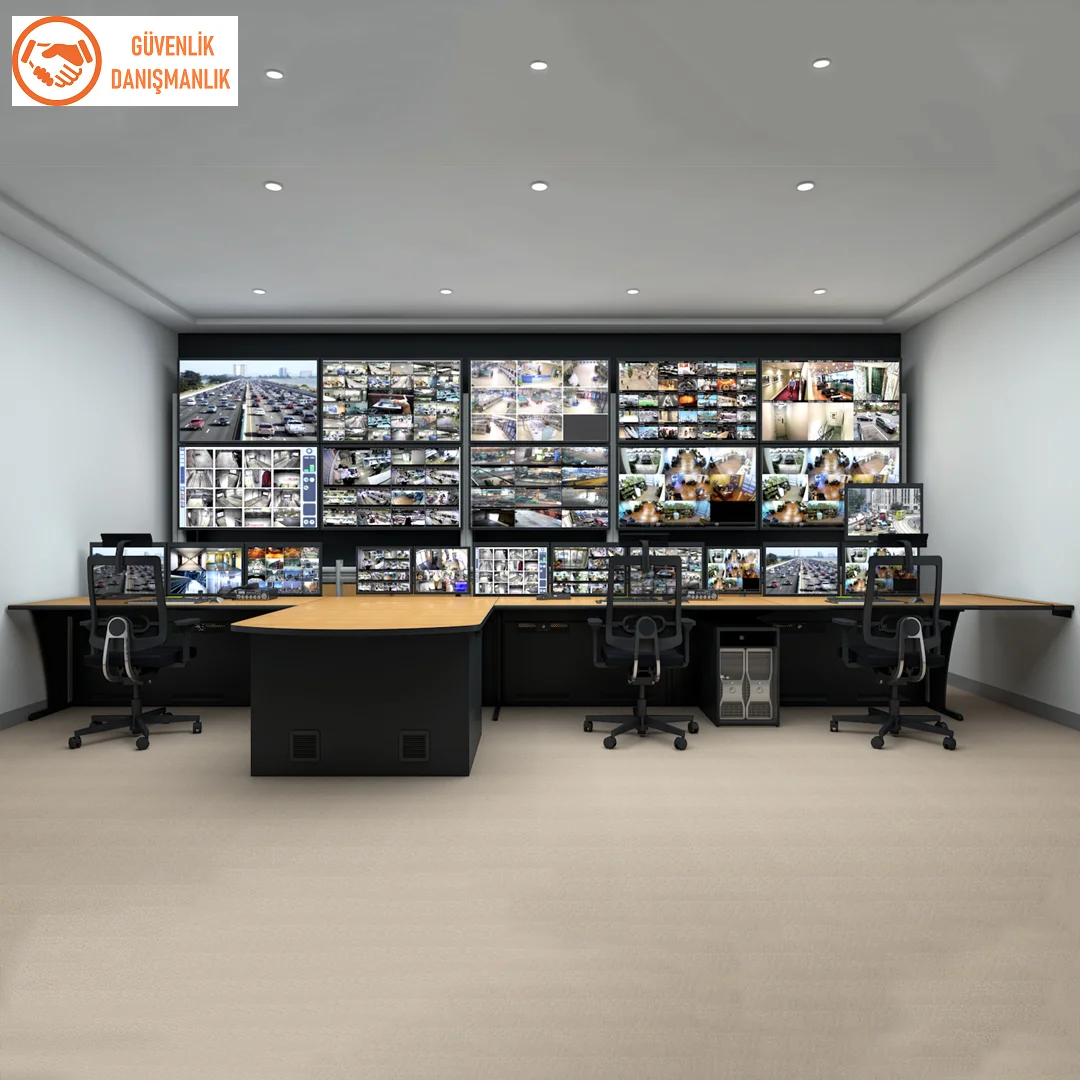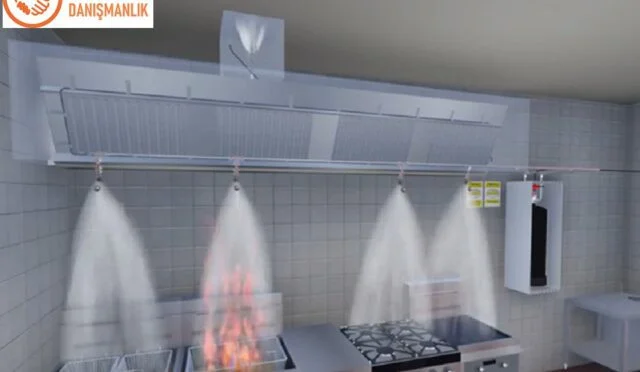Design and layout of an Electronic Security Systems Control Center
Firstly, when it comes to medium and large-scale security projects, setting up a proper security control center is of great importance, just like designing the security system itself. Security control centers are vital points where monitoring and control of all security systems are carried out for building facilities. A properly designed security center should be ergonomic, highly secure and easy to manage for personnel.

From a security perspective, electronic readers should be used at the entrances and exits of security control centers, and entry and exit should be continuously monitored. Entry and exit to security control centers must be strictly controlled, and unauthorized persons should not be allowed entry. Card readers can be used for center entry and exit, but biometric readers are preferred for increased security. Additionally, gas fire suppression systems must be used in security control centers. This will allow for rapid detection and suppression of fires that may occur in these centers, protecting sensitive devices from damage. Gas suppression will ensure that sensitive electronic systems in the center are extinguished without damage. Security control centers should be located as close to the center of the building or facility as possible and should not be accessible from outside. The centers must also be more resistant to fire than other parts of the building. In the event of a fire in the building, the room should be affected as little and as late as possible. This will ensure that electronic systems within the room are not affected by the fire or are only minimally affected.
One of the most important things in security control centers is the monitoring screens, especially the security camera system monitoring screens. The monitoring screens must be placed in the correct ergonomic position for the monitoring operators. In addition to the position of the monitoring screens for security monitoring operators, the number of screens that can be monitored by an operator is also of great importance. In general, an operator should not monitor more than four screens. If an operator is monitoring more than four screens, it can cause extreme distraction and prevent the desired monitoring results. This can lead to serious security vulnerabilities.
The monitoring screens for security monitoring operators in security control centers should be placed correctly. An example design is provided in the image below for screen placement.

Designs made without considering the ergonomics of the monitoring operator can cause neck, back pain, and other discomforts, as well as lead to a lack of concentration.

Designs made without considering the ergonomics of monitoring operators in security control centers can cause neck, back, and other types of pain, as well as distract their attention.
The number of screens used for monitoring security camera systems in security control centers is entirely dependent on the number of cameras to be monitored and the level of detail required. For example, if we use 55″ screens and design them to accommodate 32 cameras on each screen, and there are 120 cameras in our project, we can see that we need to use 4 55″ screens. Generally speaking, we can monitor 32 cameras on a 55″ screen. However, if more detail is desired in the monitoring process, the number of cameras monitored on one screen can be reduced to 16.
The monitors used in security monitoring control centers must be industrial-type products capable of operating 24/7. If possible, video wall-type monitors should be used, so that the screens can be combined if necessary. In addition, the resolution of the monitoring screens must be compatible with the system being monitored. For example, a monitoring screen for a camera system with 4k cameras should have a 4k feature. Using a 4k monitor in a system with FullHD cameras is not worthwhile.
In addition to the above-mentioned factors, climate control and lighting systems are also crucial in security monitoring centers. Direct light hitting the screen should be avoided to prevent glare, and indirect lighting should be preferred. Similarly, the air conditioning system should be designed correctly for operator comfort.
The design of electronic security system control centers typically involves planning the hardware, software, and equipment necessary for monitoring and controlling a range of electronic security systems used to ensure the safety of a building or facility. Control centers can consist of multiple systems, including alarm and monitoring systems, door access control systems, CCTV cameras, fire alarm systems, burglar alarm systems, and other facility security systems.
The design of a control center should include several important factors.
- Physical design: The control center should be planned in a suitable location with adequate space. Sufficient space should be provided for equipment and personnel in the control center. Additionally, it is important for the controls to be easily accessible, not affected by environmental factors (such as sunlight or noise), and for appropriate temperature and humidity levels to be maintained.
- Security: The control center should be designed to meet high security standards. This includes physical security, electronic security, and personnel security. For example, entrances and exits should be protected with access controls such as card readers or biometric readers.
- Communication: The control center should be designed to communicate with all security systems. This requires appropriate software and hardware that can integrate with a range of systems, such as alarm systems, CCTV cameras, and door access control systems.
- Backup and power: The control center should be supported by backup systems in the event of power outages or hardware failures. This requires a range of backup and power sources such as generators, UPS (uninterruptible power supplies), and spare hardware.
- Personnel: Control center personnel should be trained and authorized to ensure the security of the facility. Personnel should be trained to react quickly in emergency situations and have the necessary skills for maintaining and updating the system.
The design of a control center is a critical factor in ensuring the security of a facility and requires a professional approach.
The points to consider in the design of an Electronic Security Systems Control Center are as follows:
- Location Selection: The control center is a critical component in ensuring the security of a facility. Therefore, it should be located in a secure place that is protected from disasters such as fires and floods.
- Sufficient Space: Adequate space should be allocated for the control center. This may vary depending on the size of the facility and security requirements.
- Climate Control: The ventilation and air conditioning systems in the control center are important for maintaining the appropriate temperature and humidity levels required for electronic devices to function properly. The ideal temperature range is between 20-25°C and humidity level is between 40-60%.
- Power Backup System: Electronic security systems control centers require continuous power supply. Therefore, a power backup system such as an Uninterrupted Power Supply (UPS) or generators should be installed.
- Functional Equipment: The equipment used in the control center should be appropriate and functional. This may include monitoring screens, audio warning systems, emergency buttons, and communication systems.
- Fire Detection and Suppression Systems: Fire detection and suppression systems should be installed in the control center. This ensures quick intervention in the event of a fire, and prevents damage to the equipment.
- Personnel Training: Control center operators should be trained on how to use and manage the equipment. This ensures that the devices function correctly and enables quick response in emergency situations.
- Monitoring and Recording Systems: The control center should be equipped with suitable monitoring and recording systems for monitoring and recording the security of the facility. This is necessary for detecting security threats and ensuring swift action.
What are the security systems that you should use for your safety?





